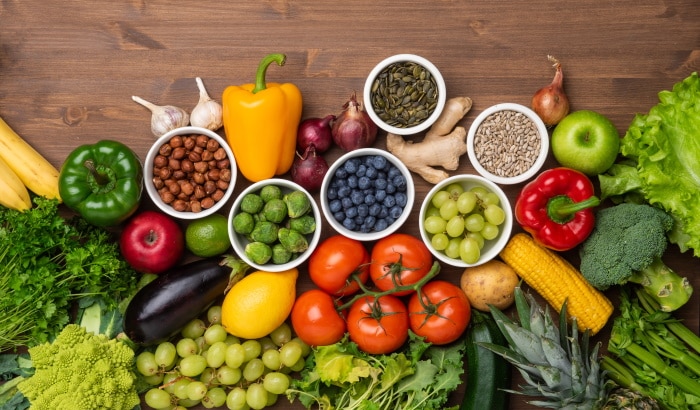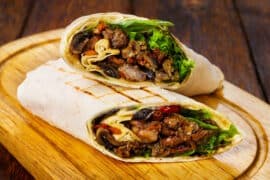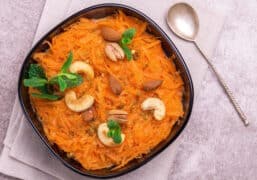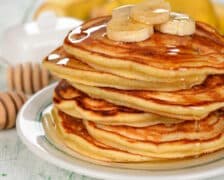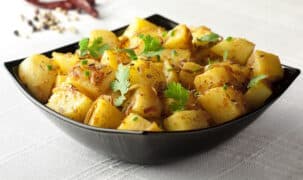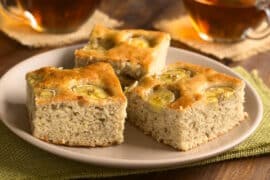Diabetes management is made much simpler when you understand the keys to diabetic cooking.
A good diabetic diet menu includes a wide variety of healthy foods from all food groups.
It is important for people with diabetes to “eat a rainbow”, that is, foods in a rainbow of colors, to ensure proper nutrition.
Many people still think of diabetes as “sugar diabetes” and think that diabetics just need to avoid consuming sugar.
The truth is that there really are no “forbidden” foods for diabetics, including a bit of sugar! (See the note below about consulting with your health care professional.)
Carbohydrates in Diabetic Cooking
The key to controlling diabetes is to limit carbohydrate consumption. That means being careful about how much you eat of the following foods:
- Breads (including biscuits, pancakes, muffins and waffles)
- Pasta
- Potatoes and sweet potatoes
- Corn
- Rice
- Legumes and pulses, like chick peas, white beans, kidney beans, pinto beans
Another key to a healthy diabetic diet plan is to generally eat only one high carbohydrate food per meal. For example, if you are having a baked potato, don’t serve corn at the same meal. Having pasta? Omit the garlic bread.
One way to get around this is to eat a very small portion of each high carbohydrate food if you want more than one higher carb food at the meal. Choose a very small baked potato and a small scoop of corn.
Of course, what works for one person doesn’t always work for you. Only you are the judge, through trying and blood testing, of what foods work for you in which combinations.
That said, simple substitutions are often all that is needed to make a meal healthier in diabetic cooking.
What does this mean in terms of the changes you would make to a typical meal? Let’s take a pasta meal for example and rev it up so it provides the maximum in terms of diabetes nutrition.
A typical Italian pasta meal for most North Americans is a plate of pasta with tomato sauce, maybe ground beef cooked into it or a couple of meatballs on the side. We may serve some garlic bread and a small side salad with it.
With diabetic cooking you can serve a very similar meal, with a few simple changes. First of all, use whole wheat spaghetti. It contains more fiber which lowers the net carb count for diabetics.
Make spaghetti with chicken meatballs instead of beef. Beef is fine, but the chicken is leaner. Serve a smaller portion of the pasta with 4 or 5 meatballs instead of 2. Serve a very large salad alongside and skip the garlic bread. Better yet, serve a small portion of the spaghetti, some meatballs, salad and Mediterranean grilled vegetables. It’s a delicious meal, fills you up, but with fewer carbohydrates in the meal.
Diabetic nutrition stresses LOTS of vegetables. The important thing to know about vegetables is that they are all carbohydrate containing foods, but some are much higher in carb count that others.
Diabetics can eat lots of lower carbohydrate foods like green beans, broccoli, cabbage, celery, cauliflower, lettuces and greens, eggplant, garlic, mushrooms, green onions, peppers, radishes, spinach, tomatoes and turnips.
High carb vegetables include potatoes, sweet potatoes, corn, beets, parsnips and peas.
All are very healthy and provide the variety of nutrients our bodies need for optimal health, but the higher carb vegetables should be consumed in much smaller amounts.
Fiber in Diabetic Cooking
Ensuring that you consume the daily requirement for fiber is important too, so eating whole grain breads is better than white in a diabetic meal plan.
According to the American Dietetic Association (ADA), adults need between 20 and 35 grams of fiber every day. That organization reports that Americans are currently only eating between 12 and 17 grams a day. So it is important to look at any way we can up the fiber content of our daily meals and snacks.
There are two kinds of fiber, soluble and insoluble and our bodies need them both. Here are some good sources of each kind of fiber –
Good Sources of Soluble Fiber Are:
- Oat bran
- Oatmeal
- Beans and legumes
- Peas
- Carrots
- Sweet potatoes
- Barley
- Citrus fruits
- Strawberries
- Bananas
Good Sources of Non-Soluble Fiber Are:
- Whole wheat breads
- Wheat based cereals
- Wheat bran and wheat bran based cereals
- Rice (not including white rice)
- Barley
- Cabbage
- Beets
- Brussels sprouts
- Turnips
- Cauliflower
Also, fruits and vegetables with their skin left on have more fiber than when peeled.
Try whole wheat pasta instead of regular pasta. I think whole wheat pasta needs to be cooked just a bit longer than white pasta or it can have a bit of a cardboardy texture, but once you get used to it, it is just fine. There is only whole wheat pasta in my home.
You can see from the lists above that it is not difficult to get your daily “fix” of fiber if you eat a wide variety of healthy fruits, vegetables and grains throughout the day, “eating a rainbow” as we said earlier.
Fats in Diabetic Cooking
There are two simple points to remember when it comes to fats and diabetic diets.
The first is to limit the total amount of fat in your diet, especially fried foods. They are simply not as healthy as other ways to cook your food and can add to the possible complications diabetics are already at higher risk for, like heart disease.
The second point is to include healthy fats in your diet. Olive oil for example is a very healthy fat and is an oil to always have on hand for cooking and salads. The fat in salmon is also amazingly healthy for us and salmon is a perfect fish for diabetics to include in their diet on a regular basis. Look here for a variety of great salmon recipes and here to see why salmon is so healthy for us.
The next step is to put all of this information into practice on a day to day basis.
Diabetic cooking is easier with tasty recipes. You will find a collection of diabetic recipes here.
Look here for sample diabetic menus developed to help you out.
We have a list of 10 of the healthiest foods you can eat, foods that diabetics should incorporate into their diets on a regular basis.
Sign up here and be the first to get new recipes and tips.
If you like this page, please take a moment to share it on your favorite social media. You can add your comments below. Thanks a lot.
Please Note: Before adjusting your diet in any way, please consult your own medical practitioner. The opinions expressed on this site are not meant to constitute medical advice or take the place of your medical practitioner.


